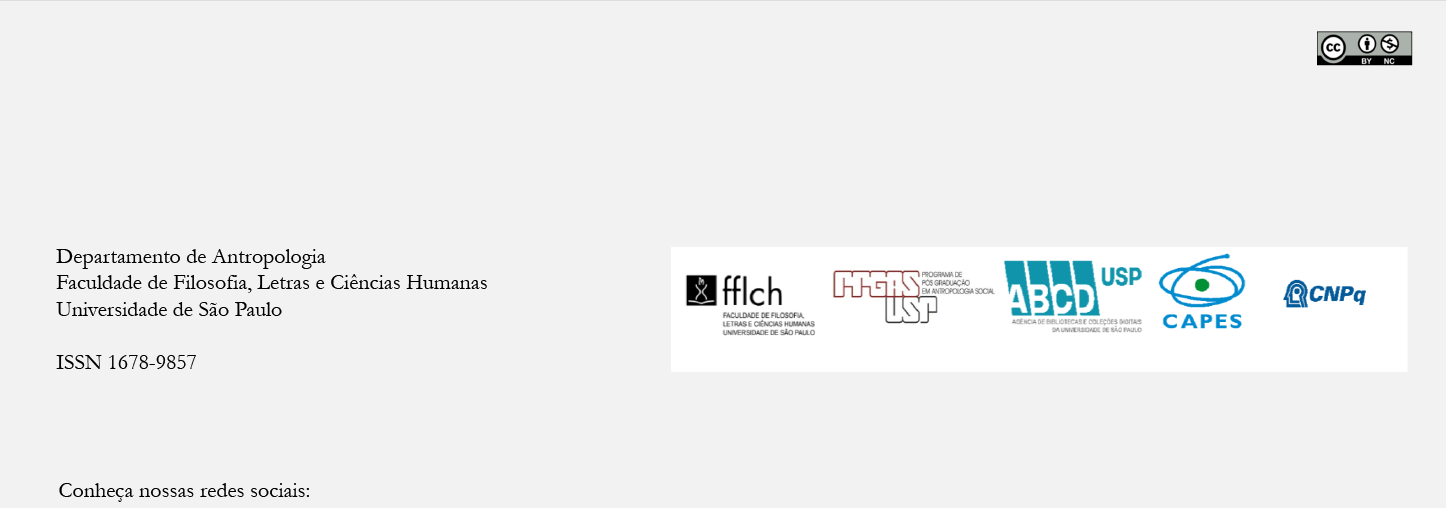Getting the Hang of How to Tame the Beast. Learning Process of Digital Technology by Elders
DOI:
https://doi.org/10.11606/2179-0892.ra.2019.165233Keywords:
Elders, Digital Technology, LearningAbstract
In this article we propose a reflection on the learning process of digital technologies by the elderly, based on an ethnographic research conducted in 2016 on platforms such as Facebook and in the computer classes for elders offered by the Computer Science Laboratory of PRAE / CPD UFSM. Our intention is to show how the relationship with computers constitutes a complex process for those subjects who are having contact with the digital technology for the first time, requiring the learning of a series of actions and technical gestures. Through different ethnographic situations we will discuss the establishment of a set of knowledge and gestures that are embodied and illustrate the relationship between the materiality of technology, body and motor skills in the process of "getting the hang" of the computer and "tame it."
Downloads
References
BATESON, Gregory. 1972. Steps to an Ecology of Mind. San Francisco, Chandler Pub. Co.
BOELLSTORFF, Tom. 2008. Coming Of Age In Second Life. Princeton, Princeton University Press.
CALLON, Michel. 2004. “The role of hybrid communities and socio-technical arrangements in the participatory design”. Journal of the Center for Information Studies, n. 5: 3-10.
CLARK, Andy. 1997. Being there. Cambridge, The MIT Press.
CSORDAS, Thomas. 2008. “A corporeidade como paradigma”. In: CSORDAS, T. Corpo/significado/cura. Porto Alegre, Editora UFRGS, pp XX-XX.
DEBERT, Guita. 2012. A reinvenção da velhice:socialização e processos de reprivatização do envelhecimento. 1. ed. São Paulo, Editora da Universidade de São Paulo/ FAPESP.
GAIGE, Diessica Shaiene. 2017. “Devagarinho a gente pega o jeito”: um estudo antropológico sobre envelhecimento e mídias digitais. Santa Maria, dissertação de mestrado, Universidade Federal de Santa Maria.
GUIMARÃES JR., Mário. 1999. “Sociabilidade no ciberespaço: distinção entre plataformas e ambientes”. In: Anais da 51ª Reunião Anual da SBPC, PUC, Porto Alegre,Rio Grande do Sul.
HINE, Christine. 2004. Etnografía virtual. Cidade,Editorial UOC.
INGOLD, Tim. 2015. “O dédalo e o labirinto: caminhar, imaginar e educar a atenção”. Horizontes Antropológicos, n. 44:21-36. Disponível em: http://horizontes.revues.org/992
INGOLD, Tim. 2010. “Da transmissão de representações à educação da atenção”.Educação v. 33, n. 1: 6-25.
LEFEBVRE, Henri. 2004. Rhythmanalysis: Space, Time and Everyday Life. Londres, Continuum.
LEFEBVRE, Henri. 1992. The production of space. Oxford, Blackwell.
LEITAO, Débora; GOMES, Laura Graziela. 2013. “Estar e não estar lá, eis a questão: pesquisa etnográfica no Second Life”. Revista Cronos v. 12, n. 2: 23-38. Disponível em: https://periodicos.ufrn.br/cronos/article/view/3159
LEROI-GOURHAN, André. 1971. Evolução e Técnicas 1:O Homem e a matéria. Lisboa, Edições 70. 2002 O Gesto e a Palavra 2:Memória e Ritmos. Lisboa: Edições 70.
MAIA, Gabriela. 2010. Olhares sobre o envelhecer: uma leitura de gênero no centro de Santa Maria. Santa Maria, dissertação de mestrado, Universidade Federal de Santa Maria.
MANOVICH, Lev. 2011. El lenguage de los nuevos medios de comunicacion. Barcelona, Paidós.
MAUSS, Marcel. 1974. “Conceptions qui ont précédé la notion de matière”. In: MAUSS, M. Oeuvres II. Paris, Minuit, pp. 161-168.
MAUSS, Marcel. 2003. “As técnicas do corpo”. In: MAUSS, M. Sociologia e antropologia, São Paulo, Cosac Naify, pp.399-422.
MILLER, Daniel; HORST, Heather. 2015. “O Digital e o Humano: prospecto para uma Antropologia Digital”. Revista Parágrafo,v. 2, n. 3: 91-111.
MILLER, Daniel; MADIANOU, Mirca. 2013. Migration and New Media: Transnational Families and Polymedia. London, Routledge.
MILLER, Daniel; SLATER, Don. 2004. “Etnografia on e off line: cybercafés em Trinidad”. Horizontes Antropológicos, v.10, n. 21: 41-65. Disponível Em: http://Www.Scielo.Br/Scielo.Php?Pid=S0104-1832004000100003&Script=Sci_Arttext.
MILLER, Daniel; SLATER, Don. 2000. The Internet: an ethnographic approach. Oxford, Berg.
NUNES, Rojane. 2010. “Boca”, a “Esquina” e o “Recanto”: sociabilidade, cotidiano e memória entre aposentados habitués do Centro de Santa Maria, RS. Santa Maria, dissertação de mestrado, Universidade Federal do Rio Grande do Sul.
PEREIRA, Vinícius Andrade. 2006. “Reflexões sobre as materialidades dos meios:embodiment, afetividade e sensorialidades nas dinâmicas de comunicação das novas mídias”. Revista Fronteiras, v.8, n.2: 93- 101.
PRENSKY, Marc. 2001. Nativos digitais, imigrantes digitais. Horizon, NCB University Press.
SAUTCHUK, Carlos Eduardo. 2015. “Aprendizagem como gênese:prática, skill e individuação”. Horizontes Antropológicos, n. 44: 109-139. Disponível em: http://horizontes.revues.org/1094.
SERRES, Michel. 2013. Polegarzinha. Rio de Janeiro, Bertrand Brasil.
TURKLE, Sherry .1997. La vida en la pantalla: la construcción de la identidade en la era de Internet. Cidade, Editora Paidós Ibérica, 1. ed..
WARNIER, Jean-Pierre. 1999. Construire la culture matérielle: L’homme qui pensait avec ses doigts. Paris, Presses Universitaires de France.
WINOCUR, Rosalía. 2009. Robinson Crusoé ya tiene celular: la conexión como espacio de control de la incertidumbre. México, Siglo XXI/ Uníversidad Autônoma Metropolitana, Unidad Iztapalapa.
Downloads
Published
Issue
Section
License
Copyright (c) 2020 Revista de Antropologia

This work is licensed under a Creative Commons Attribution 4.0 International License.
Authors who intend to publish in this journal must agree with the following terms:
- a) Authors retain copyright and grant the journal the right of first publication. The work is simultaneously licensed under the Creative Commons Attribution License, which allows the work to be shared as long as the author and the initial publication in this journal are appropriately credited.
- b) Authors are authorized to sign additional contracts for non-exclusive distribution of the version of the work published in this journal (e.g., to publish it as a book chapter), as long as the author and the initial publication in this journal are appropriately credited.
- c) Authors are allowed and encouraged to publish and distribute their work online (e.g. on their personal webpage) after the editorial process, for this can generate productive changes as well as increase the impact and citation of the work. See The Effect of Open Access Publications.




